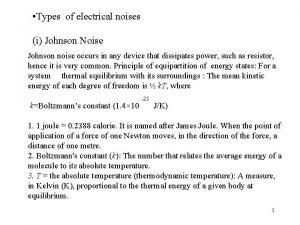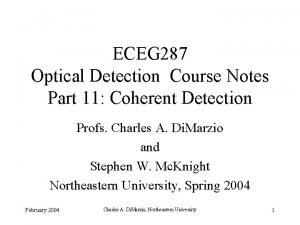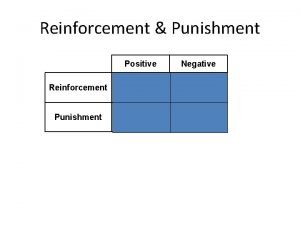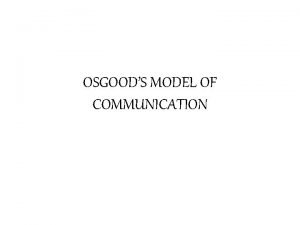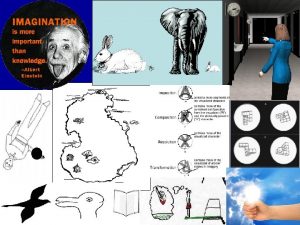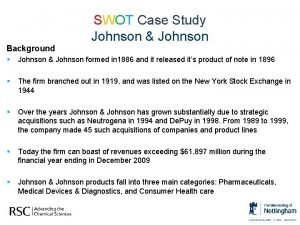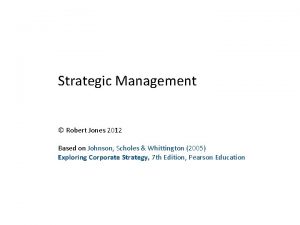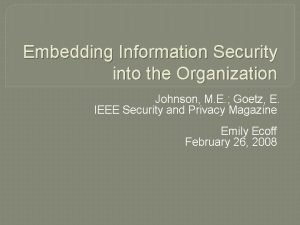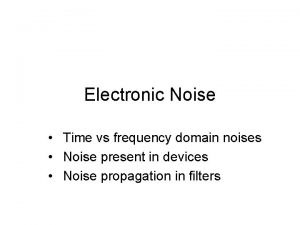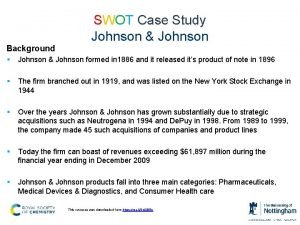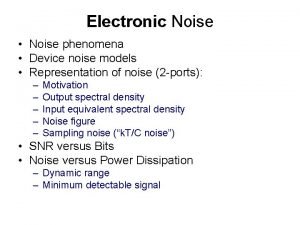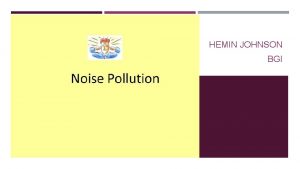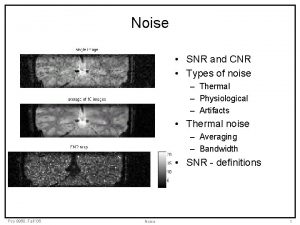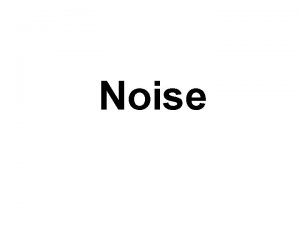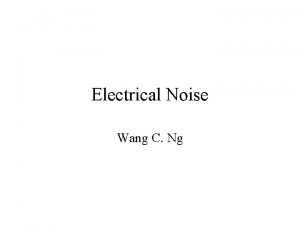Types of electrical noises i Johnson Noise Johnson












- Slides: 12

• Types of electrical noises (i) Johnson Noise Johnson noise occurs in any device that dissipates power, such as resistor, hence it is very common. Principle of equipartition of energy states: For a system in thermal equilibrium with its surroundings : The mean kinetic energy of each degree of freedom is ½ k. T, where -23 k=Boltzmann’s constant (1. 4× 10 J/K) 1. 1 joule = 0. 2388 calorie. It is named after James Joule. When the point of application of a force of one Newton moves, in the direction of the force, a distance of one metre. 2. Boltzmann's constant (k): The number that relates the average energy of a molecule to its absolute temperature. 3. T = the absolute temperature (thermodynamic temperature): A measure, in Kelvin (K), proportional to thermal energy of a given body at equilibrium. 1

Note 1: A temperature of 0 K is called "absolute zero, " and coincides with the minimum molecular activity (i. e. , thermal energy) of matter. Note 2: Thermal noise power, per hertz, is equal throughout the frequency spectrum, depending only on k and T. Note 3: For the general case, the above definition may be held to apply to charge carriers in any type of conducting medium. The electrons in a conductor thus have a mean square velocity (in one direction) that is dependent on temperature and given by ½ mv² = ½ k. T 2

It can be shown that the power spectrum (in mean squares volts per Hz) For the Johnson noise in a resistor R is given by 3 which is constant up to very high frequencies, and is refereed as white noise

(ii) Shot noise is less universal than Johnson noise, but occurs in diodes and hence in transistor. It is often the main source of noise. The effect occurs since the passage of an electron across the potential barrier in a p-n diode is a statistical process, leading to the fluctuation of the current. The expression for the power spectrum (in terms of mean squares per Hz) where I is the mean current, e the electronic charge( ) 4

Diode: An electronic device with two electrodes. In the obsolescent thermionic diode a heated cathode emits electrons, which flow across the intervening vacuum to the anode when a positive potential is applied to it. The device permits flow of current in one direction only as a negative potential applied to the anode repels the electrons. This property of diodes was made use of in the first thermionic radios, in which the diode was used to demodulate the transmitted signal. In the semiconductor diode, a p-n junction performs a similar function. The forward current increases with increasing potential difference whereas the reverse current is very small indeed. 5

A semiconductor diode consists of a PN junction and has two(2) terminals, an anode (+) and a cathode(-). Current flows from anode to cathode within the diode. A diode and schematic representation are shown below. Summary: Current flows in only one direction (anode to cathode internally). When a forward voltage is applied, the diode conducts; and when a reverse voltage is applied, there is no conduction. 6

Forward Voltage Drop , Vf Notice that the diode conducts a small current in the forward direction up to a threshold voltage, 0. 3 for germanium and 0. 7 for silicon ; after that it conducts as we might expect. The forward voltage drop, Vf, is specified at a forward current, If. Leakage current In the reverse direction there is a small leakage current up until the reverse breakdown voltage is reached. This leakage is undesireable, obviously the lower the better, and is specified at a voltage less the than breakdown; diodes are intended to operate below their breakdown voltage. 7

Example: A thermal diode is connected in series with a resistor of 10 kΩ and carries a current of 0. 1 m. A, as shown in the figure below. Find the noise voltage at the output in a bandwidth of 1 MHz. The resistor produces Johnson noise 4 RKTB in bandwidth B, taking k. T=4× 10 -21 8

The diode produces a Shot noise, which flows through the resistor, so the voltage produced is The total noise, the sum of the mean squares values, is 9

(iii) 1/f noise It is found that most semiconductor devices produce more noise, particularly at low frequencies, than is predicted by Johnson or Shot noise. This is attributed to 1/f noise, which has a power spectrum inversely proportional to frequency, given by in which I is the current in the device, and K is a constant that depends on the device. 10

A power spectrum for the noise from a typical operational amplifier. 11

Homework: 1 (i) Explain why Johnson noise increases with temperature. Does it occur at absolute zero? (ii) Does Johnson noise depend on the direct current flowing in a resistor? Does it occur in semiconductors? (iii) Does shot noise depend on the current, on the temperature or on both in a semiconductor diode? Does Shot noise occur in a resistor carrying direct current? 12
 Types of electrical noise
Types of electrical noise The noise that affects pcm
The noise that affects pcm Electrical noise
Electrical noise Russolo
Russolo When olivia makes rude noises
When olivia makes rude noises A spoiled food is
A spoiled food is Osgood-schramm’s model of communication
Osgood-schramm’s model of communication Be not afeard the isle is full of noises
Be not afeard the isle is full of noises Johnson background
Johnson background Johnson and johnson bcg matrix
Johnson and johnson bcg matrix Brad and laurie johnson
Brad and laurie johnson Credo values
Credo values Johnson and johnson organizational structure
Johnson and johnson organizational structure
